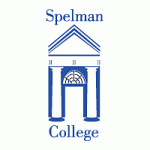Below is a summary of the abstract you submitted. Presenting author(s) is shown in bold.
If any changes need to be made, you can modify the abstract or change the authors.
You can also download a .docx version of this abstract.
If there are any problems, please email Dan at dar78@pitt.edu and he'll take care of them!
This abstract was last modified on March 18, 2024 at 9:40 p.m..

Phages are viruses that infect bacteria. Phages are one of the most abundant biological entities on Earth, and a plethora of phage diversity has yet to be discovered. These viruses can potentially be used for applications such as phage therapy, biocontrol, biosanitation, and biopreservation. For this study, ten phages were isolated from soil using Gordonia rubripertincta NRRL B-16540 and Arthrobacter globiformis B-2979 as hosts, and a morphological and molecular investigation was performed. Plaque morphologies were observed, and transmission electron microscopy (TEM) was used to visualize seven of the ten phages. For the molecular analysis, DNA was extracted from the high titer lysate and sequenced using Nanopore MinION (R10 flow cell) and Illumina technologies. Assembled contigs ranged from 38,506 to 94,087 base pairs (bp). Analysis of these genomes revealed that these phages belong to at least eight different clusters. To highlight two phages, MAnor (cluster CT) assembled into a 48,333 base pair (bp) genome with a guanine-cytosine (GC) content of 60.7%, and BillyTP (Cluster AY) assembled into a 53,003 bp genome with a GC content of 62.8%. Thus far, a total of 72 and 92 genes have been annotated in MAnor and BillyTP, respectively. An alignment of the Nanopore and Illumina assemblies of BillyTP showed that these sequences were 99.99% identical. While this result is promising, further studies should be performed to test the accuracy of the new Nanopore R10 flow cell.
